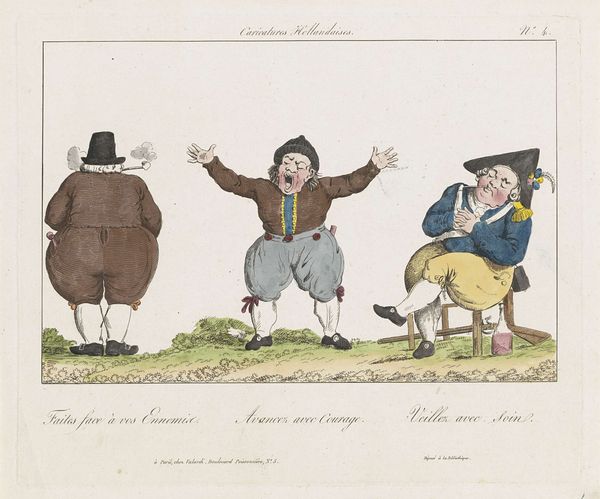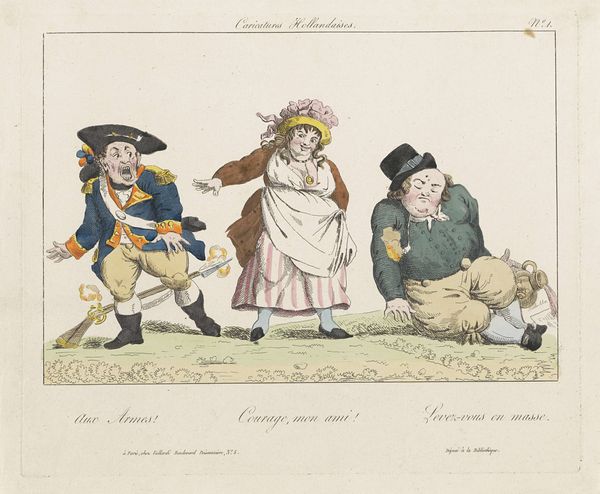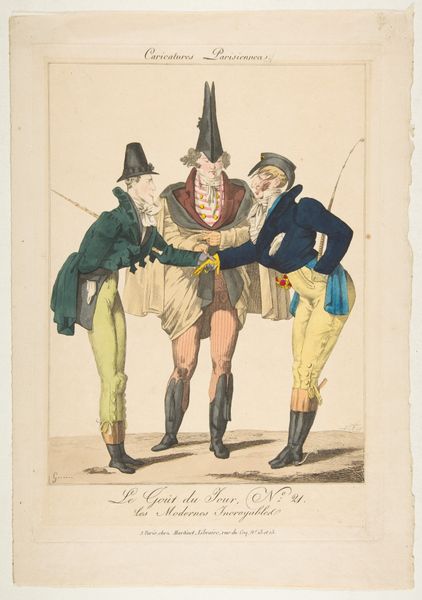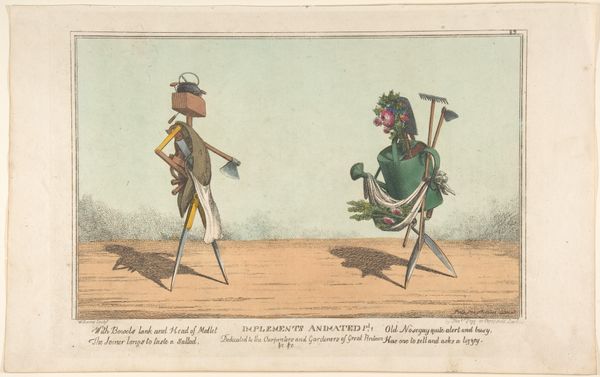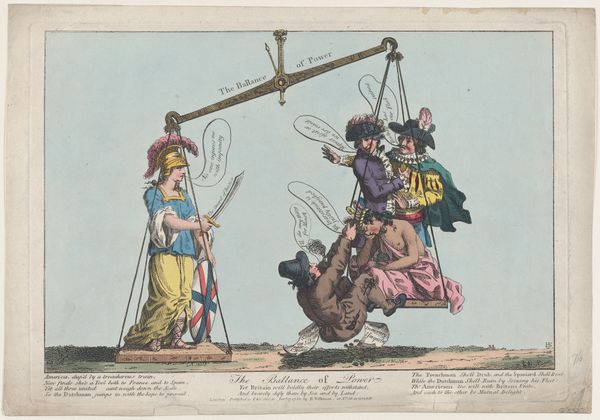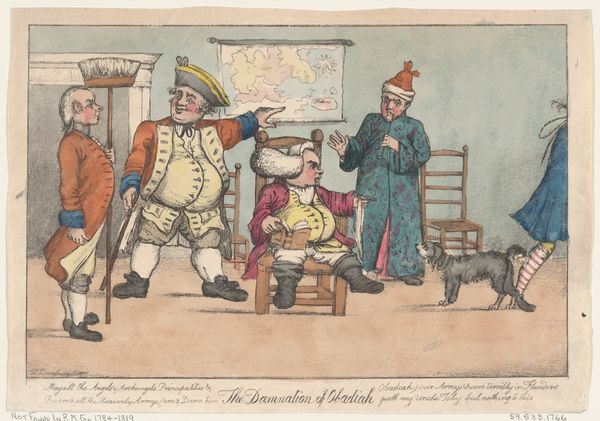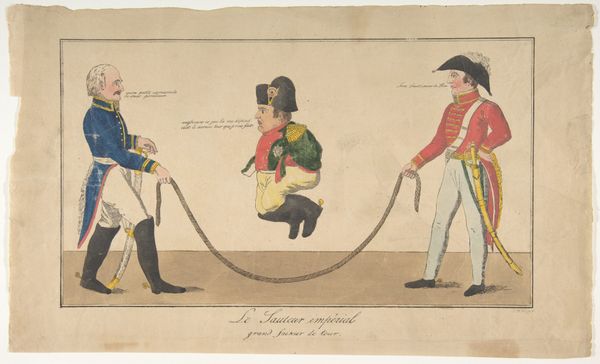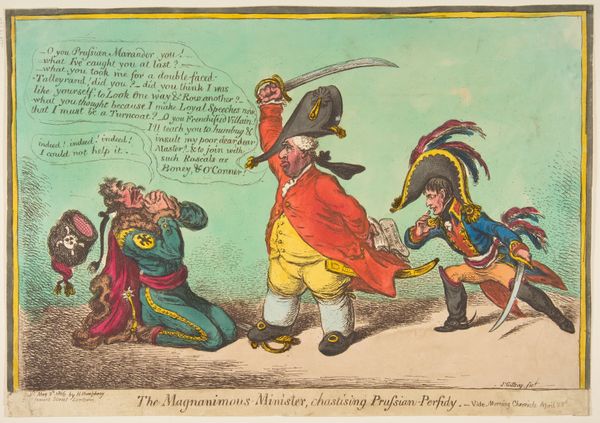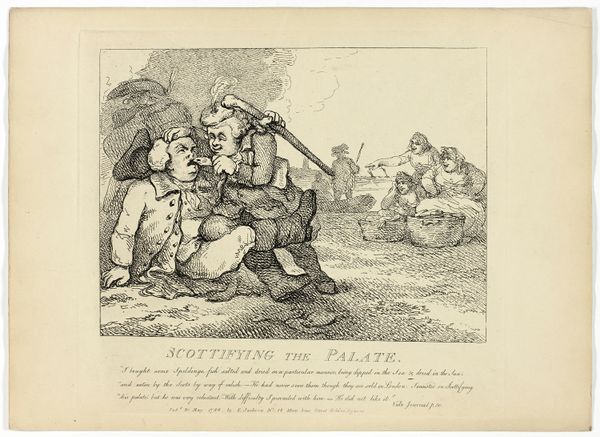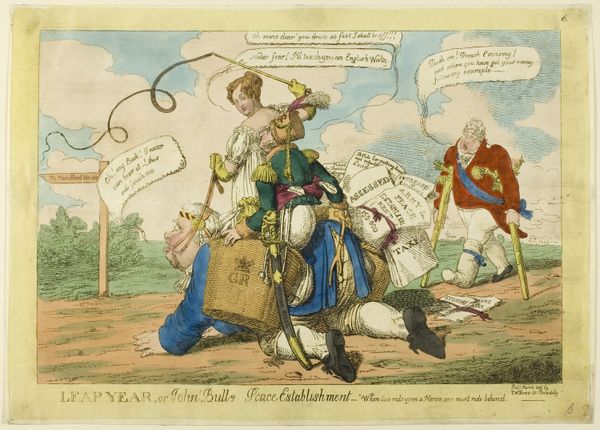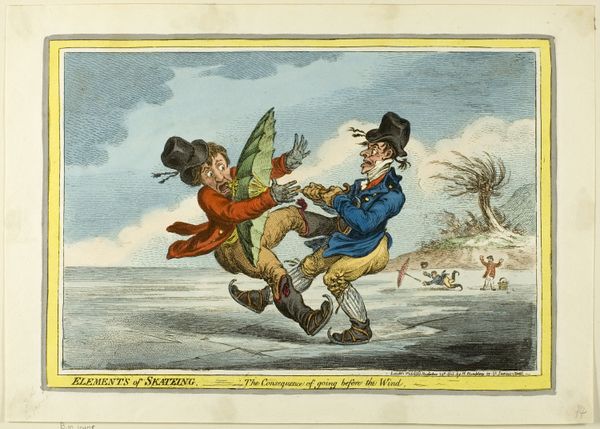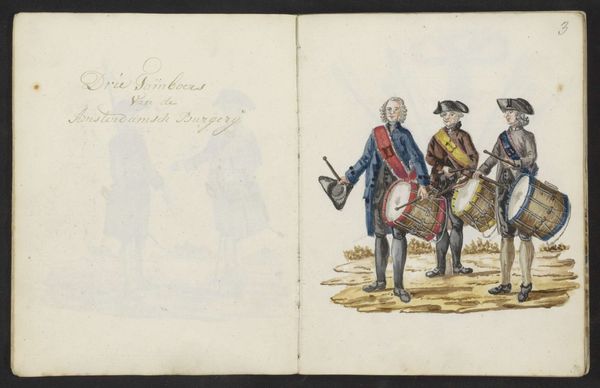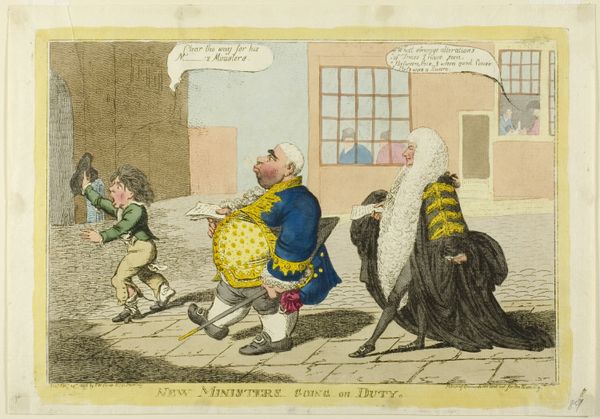
mixed-media, print, etching
#
portrait
#
mixed-media
# print
#
etching
#
caricature
#
landscape
#
figuration
#
form
#
group-portraits
#
romanticism
#
line
#
watercolour illustration
#
genre-painting
#
history-painting
Dimensions: height 269 mm, width 323 mm
Copyright: Rijks Museum: Open Domain
Editor: This etching, titled "Spotprent op de Hollanders," or "A Print of the Hollanders," from 1814, presents us with a rather comical scene. The figures are exaggerated, almost grotesque. It makes me wonder, what were they trying to say about Dutch society at the time? Curator: That’s a great observation! The power of caricature lies in its ability to amplify societal anxieties and critiques. Consider the historical backdrop: 1814 was a year of significant upheaval following Napoleonic rule. These exaggerated figures, positioned as types–"Capitaine en revue", "L'Observateur"– invite us to analyze the specific flaws and virtues, real or imagined, ascribed to them. How might the artist be commenting on Dutch leadership, observation, and perhaps even indulgence? Editor: I hadn't thought of it in terms of post-Napoleonic anxieties. So, is the artist critiquing the old guard represented by the "Capitaine," and the naiveté or inaction of "l'Observateur"? Curator: Precisely. And notice the figure with the raised bottle. What could the bottle be implying? Also, consider the way these figures are arranged. Does the composition itself convey a particular power dynamic? What does their attire signify? Who had the means to commission a piece like this? Understanding those facets is paramount. Editor: It’s almost as if the artist is poking fun at the various societal roles that existed then. There’s a lot of inequality suggested here. It's definitely a more subversive image than I initially realized. Curator: Absolutely. And the humor, biting as it is, might also offer a pathway for people to begin questioning the status quo, maybe even prompting collective action. These weren't simply images; they were instruments of socio-political critique and potentially, of change. What does this tell us about the purpose of art and satire today? Editor: It shows how relevant historical context is and makes me wonder about modern political cartoons. Thanks. I’ll have to consider satire’s capacity to both reflect and shape political realities. Curator: Exactly, and hopefully this conversation also reminds us to read visual culture with attention to social dynamics, identity and power!
Comments
No comments
Be the first to comment and join the conversation on the ultimate creative platform.

